The Way to Zion in Isaiah 40-55: Beyond New Exodus or Metaphor
Published: Jun 2023
£70.00
Entering into a longstanding debate in Isaiah research on 'way' language in chapters 40–55 comes The Way to Zion in Isaiah 40–55. This discussion concerns whether the 'way' is best understood as a new exodus of the exiles from Babylon or instead as a metaphor signifying the transformation of Jerusalem from a place of judgement to a place of redemption.
Caleb Gundlach’s study contributes to this debate by arguing that the pilgrimage to Zion becomes a prevalent aspect of the 'way' theme in Isaiah 40–55 and influences how the homecoming is envisioned in these chapters. Firstly, it lays out criteria for recognizing the pilgrimage to Zion as the predominant journey type in Isaiah 49–55. It then explores the relationship of this pilgrimage journey to the major theme of Zion’s restoration within Isaiah 40–55, a theme also emphasized by metaphorical interpretations of the 'way'.
Resituating the homecoming material within the perspective of pilgrimage to Zion sheds light on other interpretive debates on Isaiah 40–55, including:
- the Babylonian or Judahite provenance for the text;
- emphasis on either the text’s compositional stages or its thematic coherence;
- thematic tensions, such as between Zion’s restoration and the Servant’s mission to the nations.
Reconsidering Isaiah’s 'way' imagery under the paradigm of the pilgrimage to Zion provides new avenues for negotiating these issues and takes a further step towards understanding how Isaiah 40–55 coheres as a meaningful and complex unity.
The Way to Zion in Isaiah 40-55: Beyond New Exodus or Metaphor
£70.00
Entering into a longstanding debate in Isaiah research on 'way' language in chapters 40–55 comes The Way to Zion in Isaiah 40–55. This discussion concerns whether the 'way' is best understood as a new exodus of the exiles from Babylon or instead as a metaphor signifying the transformation of Jerusalem from a place of judgement to a place of redemption.
Caleb Gundlach’s study contributes to this debate by arguing that the pilgrimage to Zion becomes a prevalent aspect of the 'way' theme in Isaiah 40–55 and influences how the homecoming is envisioned in these chapters. Firstly, it lays out criteria for recognizing the pilgrimage to Zion as the predominant journey type in Isaiah 49–55. It then explores the relationship of this pilgrimage journey to the major theme of Zion’s restoration within Isaiah 40–55, a theme also emphasized by metaphorical interpretations of the 'way'.
Resituating the homecoming material within the perspective of pilgrimage to Zion sheds light on other interpretive debates on Isaiah 40–55, including:
- the Babylonian or Judahite provenance for the text;
- emphasis on either the text’s compositional stages or its thematic coherence;
- thematic tensions, such as between Zion’s restoration and the Servant’s mission to the nations.
Reconsidering Isaiah’s 'way' imagery under the paradigm of the pilgrimage to Zion provides new avenues for negotiating these issues and takes a further step towards understanding how Isaiah 40–55 coheres as a meaningful and complex unity.
Herald of Good Tidings: Essays on the Bible, Prophecy, and the Hope of Israel in Honour of Antti Laato
Published: Sep 2021
£90.00
This volume is dedicated to the prominent biblical scholar, Antti Laato, of Åbo Akademi University, Finland, on the occasion of his sixtieth birthday. In his extensive and many-faceted scholarly work spanning more than 35 years, there have been some focal points. One has been the Book of Isaiah, and, more broadly, the prophetic books and the messianic hopes they contain. From the 2010s onwards, another aspect has gained more visibility in Antti Laato's work: the reception history of the Bible —the Hebrew Bible in particular —in both Judaism and Christianity. Herald of Good Tidings is a collection of papers, by nineteen scholars mainly from the Nordic countries, on the heralds of redemption and hope, the prophets —their voice, words and deeds, and on the status and role of these prophets.
The first part of the volume concerns the world of the Hebrew Bible: biblical prophetism, the prophets themselves and their books.
The second part is devoted to the continuing message of the prophets in its post-biblical Jewish and Christian reception. A key aspect is their message of a bright future, whether about hope in general or about the Messiah. Their words are constantly being interpreted, sometimes personalities of the post-biblical era also being seen as prophetic figures.
The brief third part of the book illustrates the ongoing influence of the prophets in times yet more distant than the post-biblical age from the prophets of the Hebrew Bible.
Herald of Good Tidings: Essays on the Bible, Prophecy, and the Hope of Israel in Honour of Antti Laato
£90.00
This volume is dedicated to the prominent biblical scholar, Antti Laato, of Åbo Akademi University, Finland, on the occasion of his sixtieth birthday. In his extensive and many-faceted scholarly work spanning more than 35 years, there have been some focal points. One has been the Book of Isaiah, and, more broadly, the prophetic books and the messianic hopes they contain. From the 2010s onwards, another aspect has gained more visibility in Antti Laato's work: the reception history of the Bible —the Hebrew Bible in particular —in both Judaism and Christianity. Herald of Good Tidings is a collection of papers, by nineteen scholars mainly from the Nordic countries, on the heralds of redemption and hope, the prophets —their voice, words and deeds, and on the status and role of these prophets.
The first part of the volume concerns the world of the Hebrew Bible: biblical prophetism, the prophets themselves and their books.
The second part is devoted to the continuing message of the prophets in its post-biblical Jewish and Christian reception. A key aspect is their message of a bright future, whether about hope in general or about the Messiah. Their words are constantly being interpreted, sometimes personalities of the post-biblical era also being seen as prophetic figures.
The brief third part of the book illustrates the ongoing influence of the prophets in times yet more distant than the post-biblical age from the prophets of the Hebrew Bible.
Imagination, Ideology and Inspiration: Echoes of Brueggemann in a New Generation
Published: Aug 2015
£60.00
By any account, Walter Brueggemann stands as one of the foremost interpreters of the Hebrew Bible of the past half-century. Yet the question remains of what his influence will be on the next generation of biblical scholars, who have learned from Brueggemann and taken his work in new and often surprising directions. This volume engages that question by presenting the work of fourteen of Brueggemann's former students at Columbia Theological Seminary (Decatur, Georgia) who are now biblical scholars in their own right, asking how his influence has been received and transformed by them.
Essays in this volume present imaginative new readings of well-known texts, from the crisis of God in Genesis 22 to God's birthing body in Job 38. They engage the ideology of the text, discovering the voice of a female prophet in the book of Isaiah, a Job in drag, and a feminist Qohelet. They grapple with the implications of the text for contemporary life, from reading Lamentations after Hiroshima to considering how the production of Bibles is an act of ideological control. While clearly resonating with Brueggemann's work, these essays also take his influence in new directions, from deeper engagement with rabbinic interpretation to the incorporation of new theoretical perspectives from Lacan to Žižek to Deleuze and Guattari.
An introduction by Brent Strawn considers Brueggemann's influence in the field more generally, while a response from Carolyn Sharp offers soundings for a new generation of scholars.
Imagination, Ideology and Inspiration: Echoes of Brueggemann in a New Generation
£60.00
By any account, Walter Brueggemann stands as one of the foremost interpreters of the Hebrew Bible of the past half-century. Yet the question remains of what his influence will be on the next generation of biblical scholars, who have learned from Brueggemann and taken his work in new and often surprising directions. This volume engages that question by presenting the work of fourteen of Brueggemann's former students at Columbia Theological Seminary (Decatur, Georgia) who are now biblical scholars in their own right, asking how his influence has been received and transformed by them.
Essays in this volume present imaginative new readings of well-known texts, from the crisis of God in Genesis 22 to God's birthing body in Job 38. They engage the ideology of the text, discovering the voice of a female prophet in the book of Isaiah, a Job in drag, and a feminist Qohelet. They grapple with the implications of the text for contemporary life, from reading Lamentations after Hiroshima to considering how the production of Bibles is an act of ideological control. While clearly resonating with Brueggemann's work, these essays also take his influence in new directions, from deeper engagement with rabbinic interpretation to the incorporation of new theoretical perspectives from Lacan to Žižek to Deleuze and Guattari.
An introduction by Brent Strawn considers Brueggemann's influence in the field more generally, while a response from Carolyn Sharp offers soundings for a new generation of scholars.
Isaiah 1-12 as Written and Read in Antiquity
Published: Jun 2013
£60.00
This scrupulous study foregrounds an often forgotten element of the Masoretic texts of these important prophetic chapters: the Masoretic systems of indicating smaller and larger parts of the text through the use of spaces and accents.
The Masoretes were not only transmitters of the biblical text but also exegetes and interpreters of it, so taking the Masoretic text divisions seriously should be an essential part of our contemporary exegesis. That is not to say, however, that the Masoretic text divisions should be followed uncritically; de Bruin compares the Masoretic delimitation of textual units with his own structural analysis of the text based on its internal characteristics, as well as with the text division in other ancient manuscripts of Isaiah 1 —12. He concludes that such comparisons show the reliability of the Masoretic system and its value for modern exegetes.
Finally, the multitude of data reported here on text division in ancient Hebrew, Greek, Syriac and Latin witnesses, including commentaries of the Church Fathers Eusebius and Jerome, and the discussion of their interpretative consequences, make this book a treasure house of information for every exegete and Bible reader seeking to gain a clearer insight into Isaiah 1 —12.
Isaiah 1-12 as Written and Read in Antiquity
£60.00
This scrupulous study foregrounds an often forgotten element of the Masoretic texts of these important prophetic chapters: the Masoretic systems of indicating smaller and larger parts of the text through the use of spaces and accents.
The Masoretes were not only transmitters of the biblical text but also exegetes and interpreters of it, so taking the Masoretic text divisions seriously should be an essential part of our contemporary exegesis. That is not to say, however, that the Masoretic text divisions should be followed uncritically; de Bruin compares the Masoretic delimitation of textual units with his own structural analysis of the text based on its internal characteristics, as well as with the text division in other ancient manuscripts of Isaiah 1 —12. He concludes that such comparisons show the reliability of the Masoretic system and its value for modern exegetes.
Finally, the multitude of data reported here on text division in ancient Hebrew, Greek, Syriac and Latin witnesses, including commentaries of the Church Fathers Eusebius and Jerome, and the discussion of their interpretative consequences, make this book a treasure house of information for every exegete and Bible reader seeking to gain a clearer insight into Isaiah 1 —12.
The Book of Isaiah: Its Composition and Final Form
Published: Oct 2012
£80.00
Study of the book of Isaiah has in recent times been strongly marked by a tension between synchronic and diachronic approaches. The first is favoured mainly by English-speaking, the second by German-speaking scholars. Berges's book attempts to mediate between the two poles, arguing that the final form analysis and the tracing of the development of that form are deeply interdependent.
This new research paradigm is applied here to the entire text of the book of Isaiah. Berges works consistently from the synchronic to the diachronic and back again to the evolved synchronous final form. Features that have been repeatedly observed —the cross-connections, key word associations, resumption of themes, and especially the bracketing of the book by chaps. 1 and 66 —are traces of a deliberate interweaving of various small compositions as well as of larger literary redactions.
The paradigm most suited to the book of Isaiah in all its complexity is not that of one comprehensive overall structure or final redaction, but that of smaller compositions that build on one another, come into conversation with one another, and, each in its own way, bring into play specific contemporary problems. We should not force a common thematic denominator on the book, but it becomes clear that Jerusalem and Zion belong to the basic tenor of the book of Isaiah as it was developed and refashioned through the centuries.
The Book of Isaiah: Its Composition and Final Form is translated by Millard C. Lind from its German original, Das Buch Jesaja: Komposition und Endgestalt (Freiburg: Herder, 1998).
The Book of Isaiah: Its Composition and Final Form
£80.00
Study of the book of Isaiah has in recent times been strongly marked by a tension between synchronic and diachronic approaches. The first is favoured mainly by English-speaking, the second by German-speaking scholars. Berges's book attempts to mediate between the two poles, arguing that the final form analysis and the tracing of the development of that form are deeply interdependent.
This new research paradigm is applied here to the entire text of the book of Isaiah. Berges works consistently from the synchronic to the diachronic and back again to the evolved synchronous final form. Features that have been repeatedly observed —the cross-connections, key word associations, resumption of themes, and especially the bracketing of the book by chaps. 1 and 66 —are traces of a deliberate interweaving of various small compositions as well as of larger literary redactions.
The paradigm most suited to the book of Isaiah in all its complexity is not that of one comprehensive overall structure or final redaction, but that of smaller compositions that build on one another, come into conversation with one another, and, each in its own way, bring into play specific contemporary problems. We should not force a common thematic denominator on the book, but it becomes clear that Jerusalem and Zion belong to the basic tenor of the book of Isaiah as it was developed and refashioned through the centuries.
The Book of Isaiah: Its Composition and Final Form is translated by Millard C. Lind from its German original, Das Buch Jesaja: Komposition und Endgestalt (Freiburg: Herder, 1998).
Isaiah: The Prophet and His Book
Published: July 2012
£21.00
The book of Isaiah presents one of the most challenging pieces of literature in the Hebrew Bible. Over a period of some four hundred years (from the end of the eighth century down to the end of the fourth century BCE), the great prophet Isaiah and his disciples in the Assyrian period, as well as later scholars in Babylonian and Persian times, worked on this marvellous prophetic text. In its final form it resembles a mediaeval cathedral constructed by many gifted people across the centuries. Each piece has its own history, place and function in the whole structure.
In this lucid study, Berges interprets the scroll of Isaiah as a 'literal cathedral', written by many hands and empowered by the experience of sorrow and disaster, liberation and joy. In the centre of the book (Isaiah 36 —39) and of its theology stands the threat and redemption of Zion. The nations that in the first part were taking action against God's city are invited to join the exiled and dispersed people of Israel as it travels home. The reader too is called to journey the same path and to join the congregation of Israel and the nations on their way to the New Jerusalem — not in heaven but on a renewed earth.
Methodologically, the book combines synchronic and diachronic perspectives and paves the way to a fruitful conversation between them. The vast reception history of the Book of Isaiah in the Septuagint, the New Testament, and in rabbinic and Christian traditions, as well as in painting and music, is also illustrated by some of the most illuminating examples.
Isaiah: The Prophet and His Book
£21.00
The book of Isaiah presents one of the most challenging pieces of literature in the Hebrew Bible. Over a period of some four hundred years (from the end of the eighth century down to the end of the fourth century BCE), the great prophet Isaiah and his disciples in the Assyrian period, as well as later scholars in Babylonian and Persian times, worked on this marvellous prophetic text. In its final form it resembles a mediaeval cathedral constructed by many gifted people across the centuries. Each piece has its own history, place and function in the whole structure.
In this lucid study, Berges interprets the scroll of Isaiah as a 'literal cathedral', written by many hands and empowered by the experience of sorrow and disaster, liberation and joy. In the centre of the book (Isaiah 36 —39) and of its theology stands the threat and redemption of Zion. The nations that in the first part were taking action against God's city are invited to join the exiled and dispersed people of Israel as it travels home. The reader too is called to journey the same path and to join the congregation of Israel and the nations on their way to the New Jerusalem — not in heaven but on a renewed earth.
Methodologically, the book combines synchronic and diachronic perspectives and paves the way to a fruitful conversation between them. The vast reception history of the Book of Isaiah in the Septuagint, the New Testament, and in rabbinic and Christian traditions, as well as in painting and music, is also illustrated by some of the most illuminating examples.
Jerusalem and the Nations: Studies in the Book of Isaiah
Published: Sep 2011
£50.00
This volume contains the fruit of three decades of Ronald Clements's researches on prophecy in the Old Testament. In sixteen papers, seven of them not previously published, he broaches several leading questions about the origins of written prophecy in the Old Testament. A major focus is on the impact of the events of 701 BCE on the formation of the Isaiah book as a whole and the rise of Jerusalem as a centre of religious hope.
Further studies deal with the role of the Isaiah book in current biblical interpretation and the failure of twentieth-century interpreters to explain its unity. Other subjects concern ideas of divine providence, theodicy, and the links between ancient scribal methods of book formation and canonical authority. Special attention is given to the attempts to retain traditional Christian approaches to a book, the interpretation of which has been greatly transformed by modern critical study.
Jerusalem and the Nations: Studies in the Book of Isaiah
£50.00
This volume contains the fruit of three decades of Ronald Clements's researches on prophecy in the Old Testament. In sixteen papers, seven of them not previously published, he broaches several leading questions about the origins of written prophecy in the Old Testament. A major focus is on the impact of the events of 701 BCE on the formation of the Isaiah book as a whole and the rise of Jerusalem as a centre of religious hope.
Further studies deal with the role of the Isaiah book in current biblical interpretation and the failure of twentieth-century interpreters to explain its unity. Other subjects concern ideas of divine providence, theodicy, and the links between ancient scribal methods of book formation and canonical authority. Special attention is given to the attempts to retain traditional Christian approaches to a book, the interpretation of which has been greatly transformed by modern critical study.
Through the ‘I’-Window: The Inner Life of Characters in the Hebrew Bible
Published: Mar 2011
£60.00
It is often said that the inner life of characters in the Hebrew Bible is inaccessible to us, and that we can know little or nothing about how they felt and thought. In this study, original in both its scope and its method, Barbara Leung Lai shows how wrong that assumption is. She directs our attention to the many places where her chosen characters, Daniel, Isaiah, and Yahweh, speak of themselves, using the first-person 'I' voice, and finds those to be a unique point of entry, or window, into the interiority of the characters.
To construct an interior profile of these characters, Leung Lai develops an integrated methodology of psychological exegesis, drawing upon psychological perspectives of personality, Bakhtinian views of polyphony and dialogism, current studies of emotion, self and selfhood, and the empirics of reading under the rubric of reader-response literary criticism.
From these perspectives, Leung Lai can identify in Daniel two primary realms in his inner identity-seeing and emotive experiencing -- and can characterize Daniel's interior world as a world of paradoxes, of seeing without comprehending, hearing without the capacity to respond. Isaiah, on the other hand, exhibits a broad spectrum of emotions, from love, intimacy, joy and empathy to a sense of being under divine constraint, and to mourning, lament, doubt, distress, helplessness and despair. The prophet exhibits a profound sense of selfhood and subtle inner depths. The character of Yahweh is found to be most striking for its inner conflicts, with its frustrations, disappointments, pain and suffering.
This groundbreaking book will stimulate many readers to a new appreciation of characterization in the Hebrew Bible.
Through the ‘I’-Window: The Inner Life of Characters in the Hebrew Bible
£60.00
It is often said that the inner life of characters in the Hebrew Bible is inaccessible to us, and that we can know little or nothing about how they felt and thought. In this study, original in both its scope and its method, Barbara Leung Lai shows how wrong that assumption is. She directs our attention to the many places where her chosen characters, Daniel, Isaiah, and Yahweh, speak of themselves, using the first-person 'I' voice, and finds those to be a unique point of entry, or window, into the interiority of the characters.
To construct an interior profile of these characters, Leung Lai develops an integrated methodology of psychological exegesis, drawing upon psychological perspectives of personality, Bakhtinian views of polyphony and dialogism, current studies of emotion, self and selfhood, and the empirics of reading under the rubric of reader-response literary criticism.
From these perspectives, Leung Lai can identify in Daniel two primary realms in his inner identity-seeing and emotive experiencing -- and can characterize Daniel's interior world as a world of paradoxes, of seeing without comprehending, hearing without the capacity to respond. Isaiah, on the other hand, exhibits a broad spectrum of emotions, from love, intimacy, joy and empathy to a sense of being under divine constraint, and to mourning, lament, doubt, distress, helplessness and despair. The prophet exhibits a profound sense of selfhood and subtle inner depths. The character of Yahweh is found to be most striking for its inner conflicts, with its frustrations, disappointments, pain and suffering.
This groundbreaking book will stimulate many readers to a new appreciation of characterization in the Hebrew Bible.
Reel Revelations: Apocalypse and Film
Published: Oct 2010
£50.00
In the last decades, writers and directors have increasingly found the Book of Revelation a fitting cinematic muse for an age beset by possibilities of world destruction. Many apocalyptic films stay remarkably close to the idea of apocalypse as a revelation about the future, often quoting or using imagery from Revelation, as well as its Old Testament antecedents in Daniel, Ezekiel, and Isaiah.
The apocalyptic paradigm often instigates social criticism. Kim Paffenroth examines how zombie films deploy apocalyptic language and motifs to critique oppressive values in American culture. Lee Quinby shows how Richard Kelly's Southland Tales critiques not only social and economic crises in the USA but also Revelation's depictions of Good versus Evil as absolute oppositions. Frances Flannery points out how Josh Whedon's Serenity deconstructs the apocalypse precisely by using elements of it, depicting humans as their own created monsters.
Jon Stone notes how apocalyptic fictions, while presenting nightmare scenarios, are invariably optimistic, with human ingenuity effectively responding to potential disasters. Mary Ann Beavis examines the device of invented scriptures (pseudapocrypha), deployed as a narrative trope for holding back the final cataclysm. John Walliss studies evangelical Christian films that depict how the endtime scenario will unfold, so articulating and even redefining a sense of evangelical identity.
Richard Walsh analyses the surreptitious sanctification of empire that occurs in both Revelation and End of Days under the cover of a blatant struggle with another 'evil' empire. Greg Garrett examines how the eschatological figure of 'The Son of Man' is presented in the Matrix trilogy, the Terminator tetralogy, and Signs. Elizabeth Rosen shows how a postmodern apocalyptic trend has been working its way into children's fiction and film such as The Transformers, challenging the traditionally rigid depictions of good and evil found in many children's stories.
Reel Revelations: Apocalypse and Film
£50.00
In the last decades, writers and directors have increasingly found the Book of Revelation a fitting cinematic muse for an age beset by possibilities of world destruction. Many apocalyptic films stay remarkably close to the idea of apocalypse as a revelation about the future, often quoting or using imagery from Revelation, as well as its Old Testament antecedents in Daniel, Ezekiel, and Isaiah.
The apocalyptic paradigm often instigates social criticism. Kim Paffenroth examines how zombie films deploy apocalyptic language and motifs to critique oppressive values in American culture. Lee Quinby shows how Richard Kelly's Southland Tales critiques not only social and economic crises in the USA but also Revelation's depictions of Good versus Evil as absolute oppositions. Frances Flannery points out how Josh Whedon's Serenity deconstructs the apocalypse precisely by using elements of it, depicting humans as their own created monsters.
Jon Stone notes how apocalyptic fictions, while presenting nightmare scenarios, are invariably optimistic, with human ingenuity effectively responding to potential disasters. Mary Ann Beavis examines the device of invented scriptures (pseudapocrypha), deployed as a narrative trope for holding back the final cataclysm. John Walliss studies evangelical Christian films that depict how the endtime scenario will unfold, so articulating and even redefining a sense of evangelical identity.
Richard Walsh analyses the surreptitious sanctification of empire that occurs in both Revelation and End of Days under the cover of a blatant struggle with another 'evil' empire. Greg Garrett examines how the eschatological figure of 'The Son of Man' is presented in the Matrix trilogy, the Terminator tetralogy, and Signs. Elizabeth Rosen shows how a postmodern apocalyptic trend has been working its way into children's fiction and film such as The Transformers, challenging the traditionally rigid depictions of good and evil found in many children's stories.
Painting the Text: The Artist as Biblical Interpreter
Published: Dec 2009
£18.50 – £45.00
In this masterly work, Martin O'Kane shows artists at work as readers of the Bible and not simply as illustrators of biblical scenes. The painter's eye commonly sees nuances and subtleties of plot and characterization in the biblical text that traditional biblical criticism has overlooked.
Focussing in fine detail on some well-known biblical themes--the deception of Isaac, the depiction of Isaiah's suffering servant, the visit of the Magi and the flight into Egypt, among others--O'Kane argues that modern readers need the artist's exegetical insight and engagement to fully appreciate the text.
Ranging widely over mediaeval, Renaissance and modern art, the author situates his work within the hermeneutical aesthetics of Hans-Georg Gadamer, Mieke Bal and Paolo Bernini. Some 30 images are reproduced in the text.
Painting the Text: The Artist as Biblical Interpreter
£18.50 – £45.00
In this masterly work, Martin O'Kane shows artists at work as readers of the Bible and not simply as illustrators of biblical scenes. The painter's eye commonly sees nuances and subtleties of plot and characterization in the biblical text that traditional biblical criticism has overlooked.
Focussing in fine detail on some well-known biblical themes--the deception of Isaac, the depiction of Isaiah's suffering servant, the visit of the Magi and the flight into Egypt, among others--O'Kane argues that modern readers need the artist's exegetical insight and engagement to fully appreciate the text.
Ranging widely over mediaeval, Renaissance and modern art, the author situates his work within the hermeneutical aesthetics of Hans-Georg Gadamer, Mieke Bal and Paolo Bernini. Some 30 images are reproduced in the text.
Recent Research on the Major Prophets
Published: Oct 2008
£60.00
Given the many new methods and approaches for interpreting biblical literature that have appeared in the past several decades, it is hardly surprising that our understanding of the prophets Isaiah, Jeremiah and Ezekiel has expanded and diversified at a rapid pace. Historical-critical understandings and perspectives have been challenged and often dramatically altered. New approaches, such as social-scientific criticism, rhetorical criticism, feminist criticism, reader response criticism, literary analysis, anthropological analysis, structuralist criticism, ideological criticism, and deconstructionist criticism have both challenged old approaches and shed new light on the texts being studied.
In this volume, Alan Hauser presents eleven articles, each with an extensive bibliography, that survey the variety and depth of recent and contemporary scholarship on these three prophets. Five of them are new to this volume. All are written by experts in each area of scholarship, including Marvin Sweeney, Paul Kim, Roy Melugin, Robert P. Carroll, Peter Diamond, Katheryn Pfisterer Darr and Risa Levitt Kohn. Hauser introduces the volume with a comprehensive summary and overview of the articles.
Recent Research on the Major Prophets
£60.00
Given the many new methods and approaches for interpreting biblical literature that have appeared in the past several decades, it is hardly surprising that our understanding of the prophets Isaiah, Jeremiah and Ezekiel has expanded and diversified at a rapid pace. Historical-critical understandings and perspectives have been challenged and often dramatically altered. New approaches, such as social-scientific criticism, rhetorical criticism, feminist criticism, reader response criticism, literary analysis, anthropological analysis, structuralist criticism, ideological criticism, and deconstructionist criticism have both challenged old approaches and shed new light on the texts being studied.
In this volume, Alan Hauser presents eleven articles, each with an extensive bibliography, that survey the variety and depth of recent and contemporary scholarship on these three prophets. Five of them are new to this volume. All are written by experts in each area of scholarship, including Marvin Sweeney, Paul Kim, Roy Melugin, Robert P. Carroll, Peter Diamond, Katheryn Pfisterer Darr and Risa Levitt Kohn. Hauser introduces the volume with a comprehensive summary and overview of the articles.

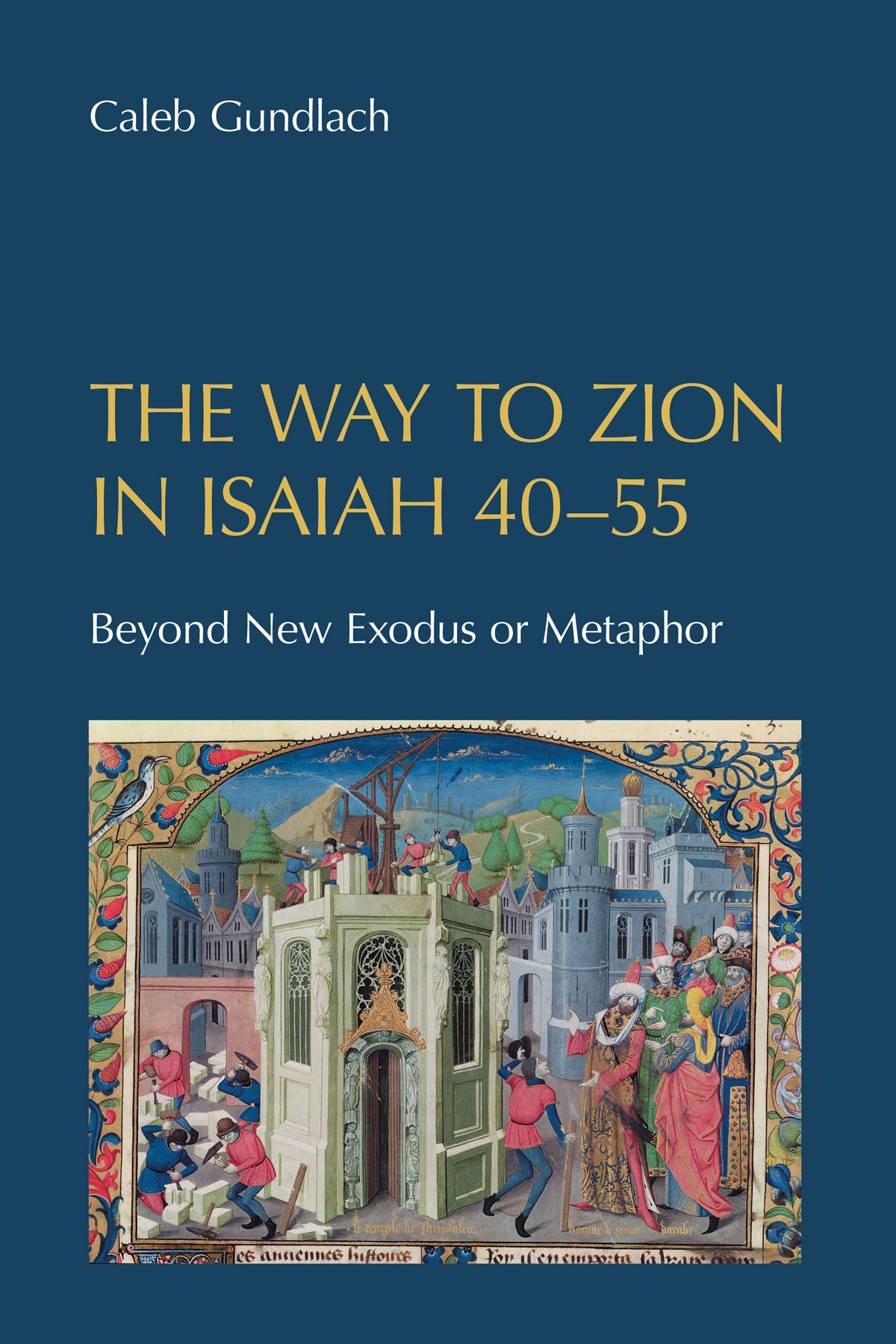
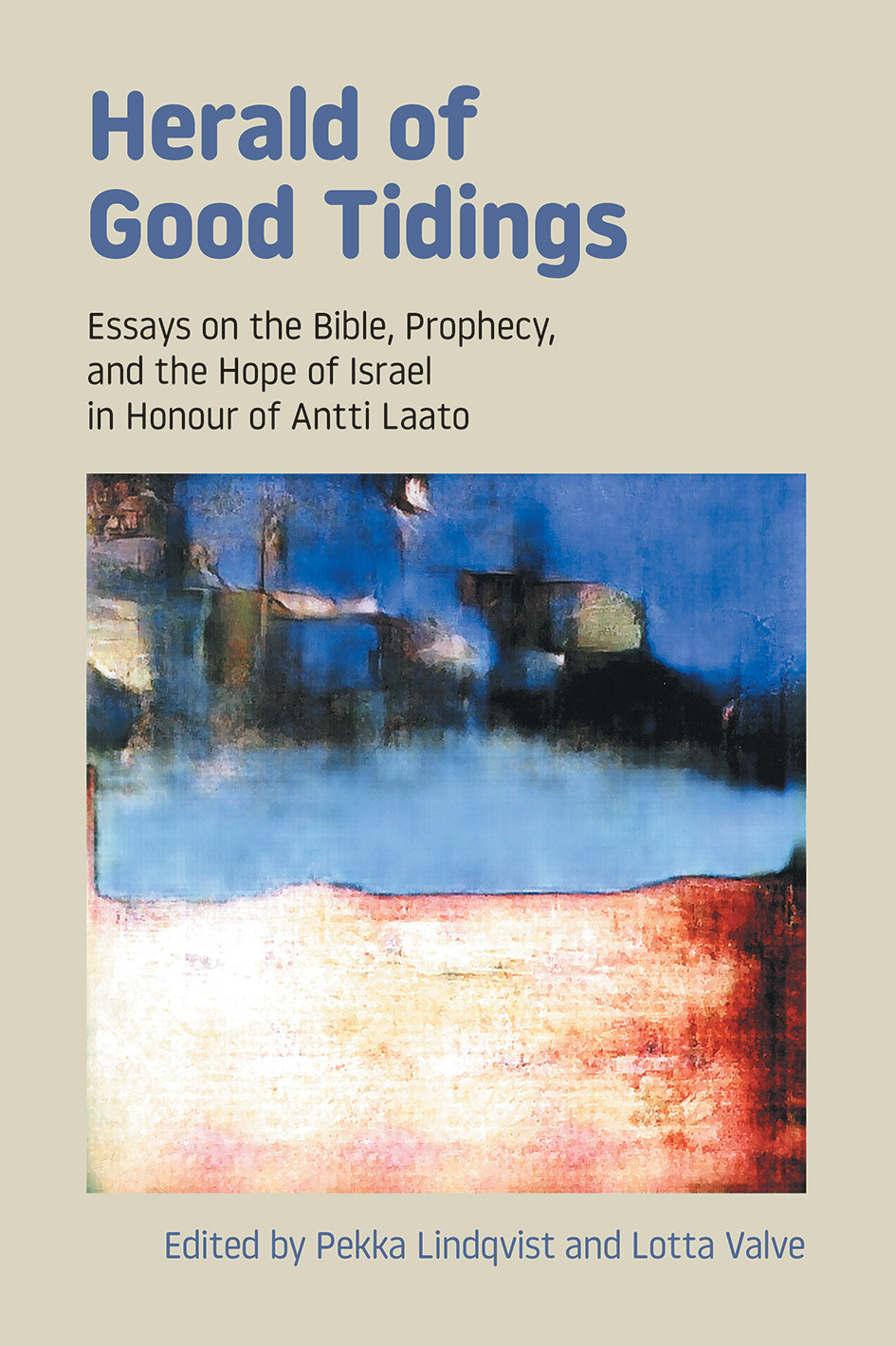
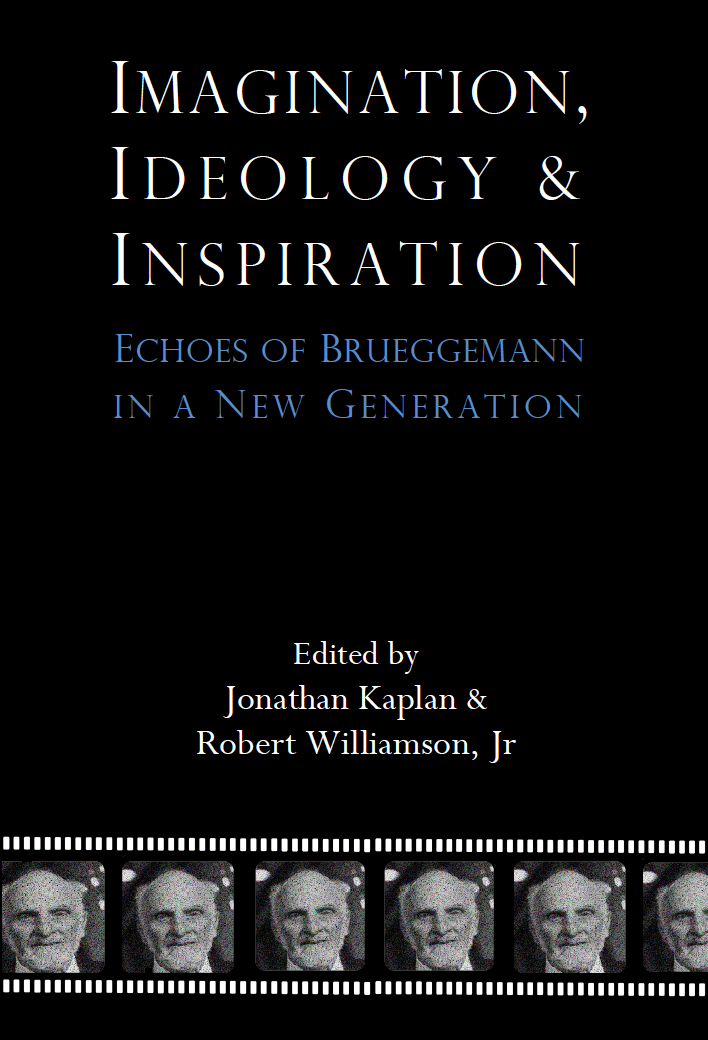
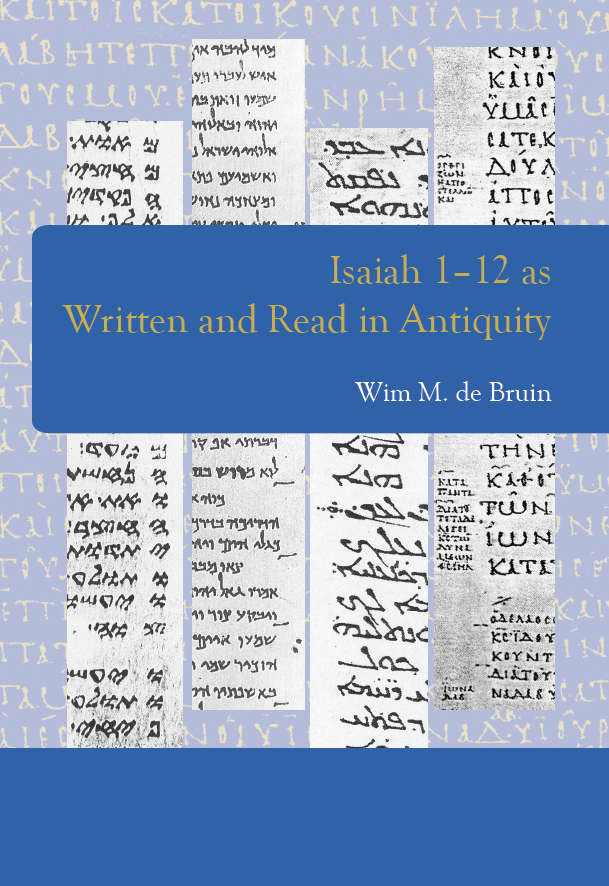
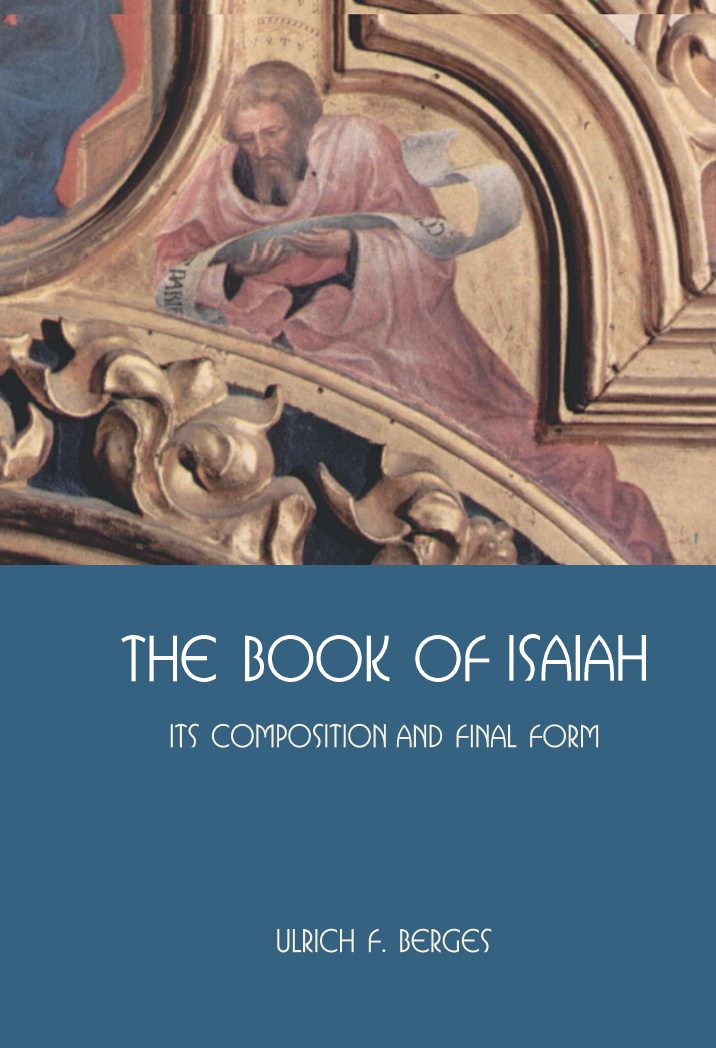
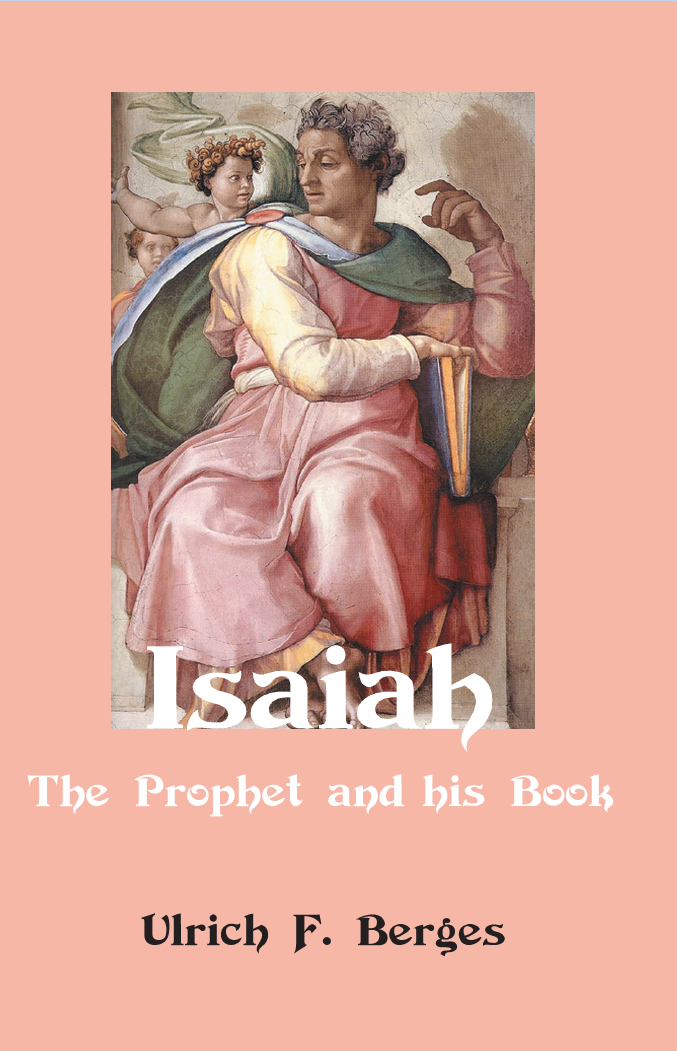
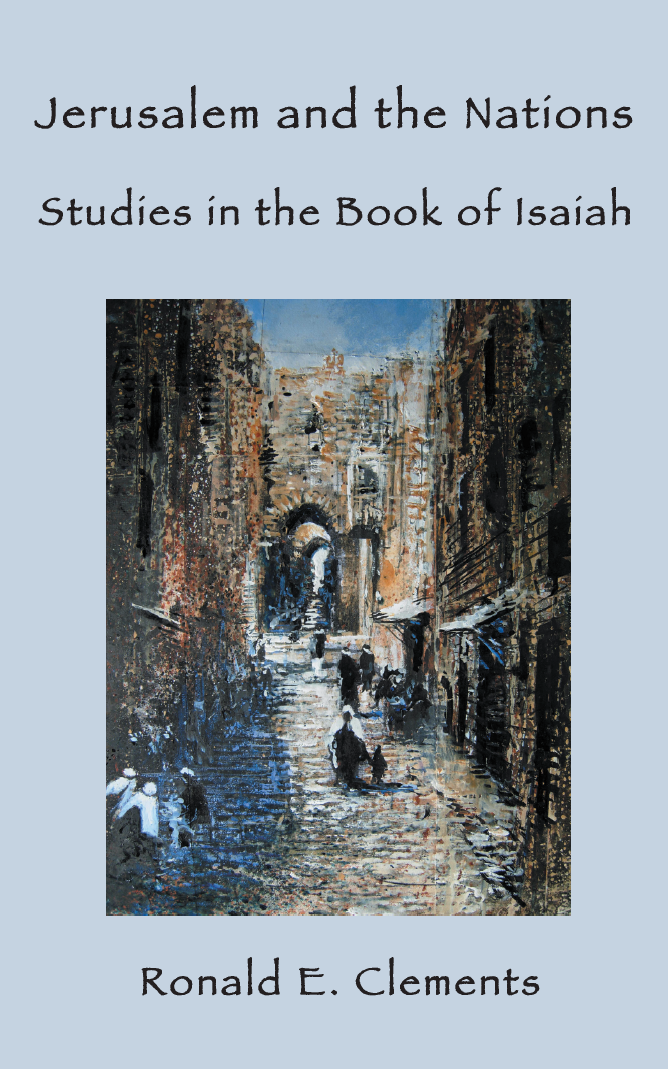
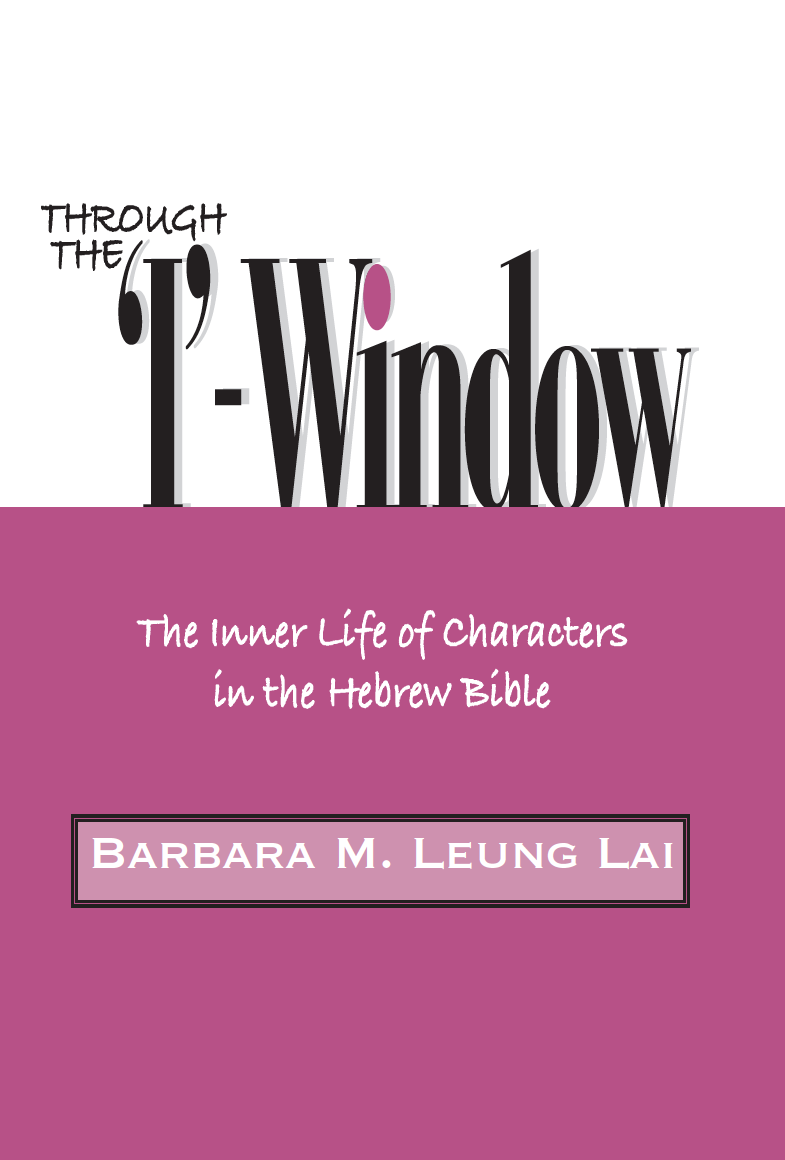
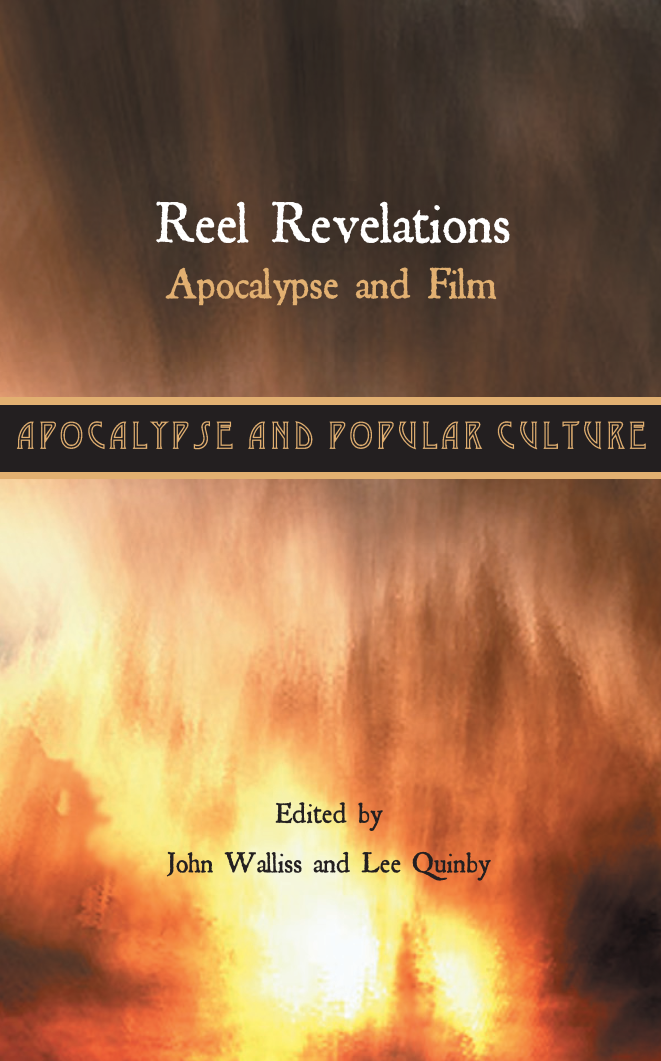


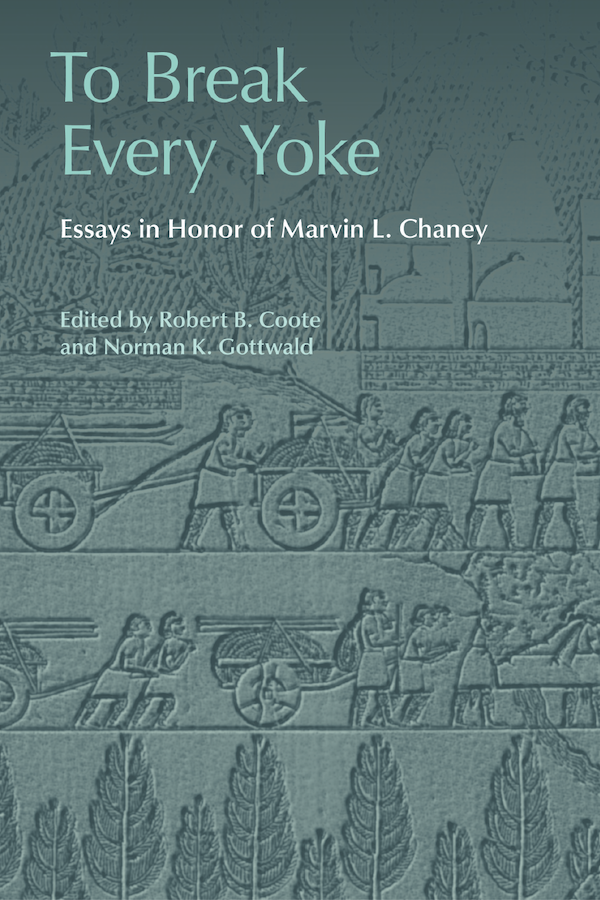
Isaiah
Isaiah